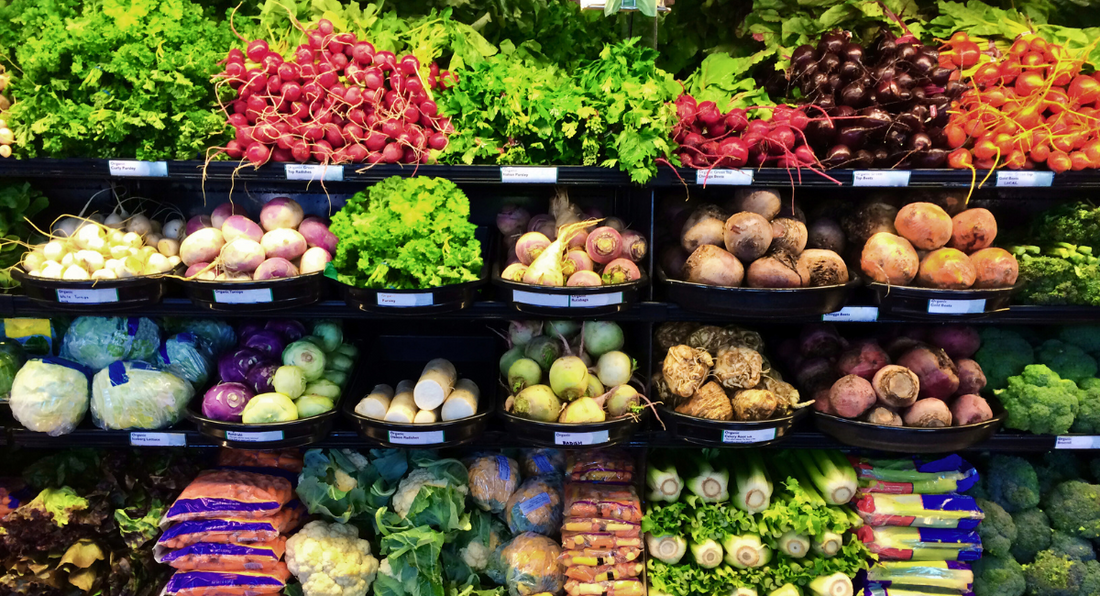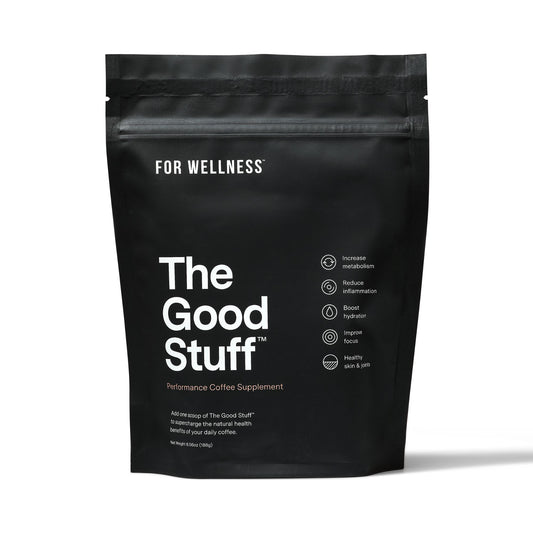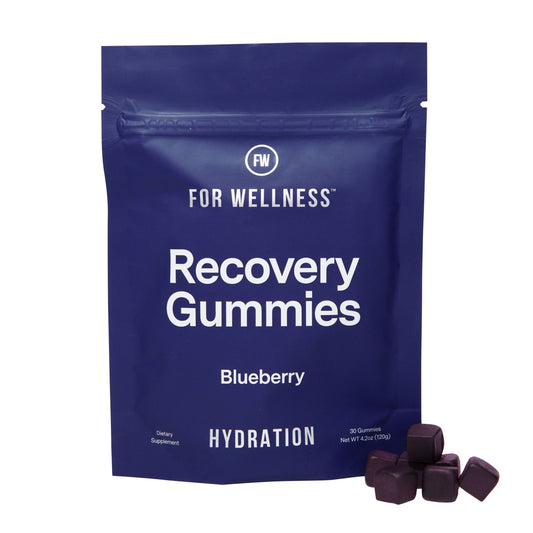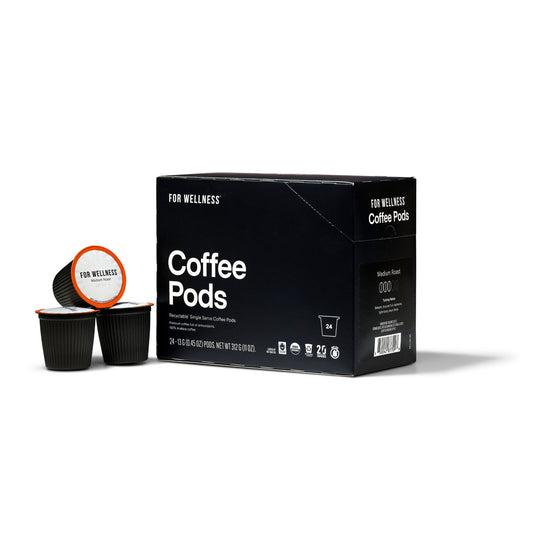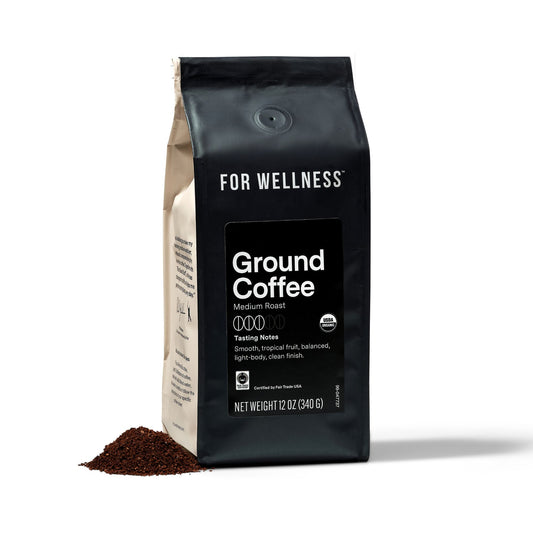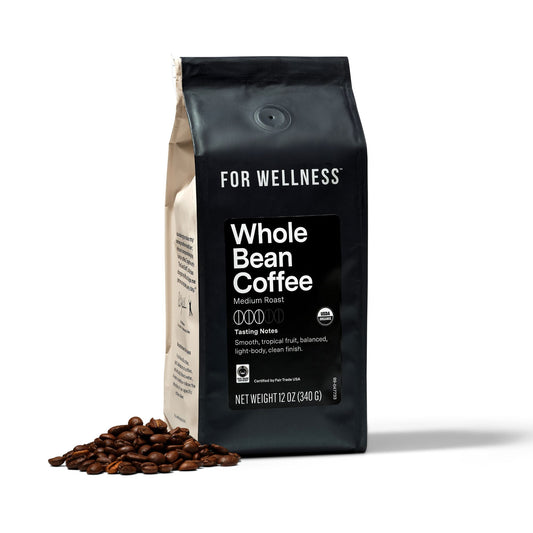Finding clean whole foods can feel impossible in a world with convenience foods and processed snacks on every corner.
But fear not! In this guide, we'll explain how to distinguish genuine, nutrient-dense foods from their processed counterparts, empowering you to make choices that align with your health goals and values.
First Things First: What Is Clean Eating?
You hear the term "clean eating" thrown around often, but what does it mean? Clean eating emphasizes whole, unprocessed foods that are as close to their natural state as possible. Think chicken (whole food) vs. chicken nuggets (processed food).
While eating foods that have undergone some processing is inevitable, clean eating encourages choosing foods that have undergone minimal processing and contain few, if any, added ingredients, especially added sugars, artificial sweeteners, preservatives, artificial flavors, and dyes.
What Are the Benefits of Clean Eating?
Embracing a clean eating lifestyle offers many benefits for your physical and mental well-being. Let's take a look at some of the key advantages:
Improved Nutrient Intake
Clean eating prioritizes whole, nutrient-dense foods like fruits, vegetables, whole grains, and lean proteins. By focusing on these foods, you naturally increase your intake of essential vitamins, minerals, antioxidants, and fiber, vital for optimal health and physical performance.
Enhanced Energy Levels
Clean eating helps you avoid the energy crashes associated with consuming refined sugars and processed foods. Nutrient-rich whole foods provide sustained energy throughout the day, helping you feel more energized and alert.
Nutrient Transparency
Clean eating can support your fitness goals by promoting the consumption of filling, nutrient-dense foods that are lower in calories and higher in fiber. Highly processed foods often contain a surprising number of calories that do little to support your body's functional needs. Focusing on whole foods and minimizing processed foods makes it easier for you to know exactly what's going into your body, and get more bang for your bite.
Better Digestive Health
Processed foods have been linked to an increased risk of developing gut inflammation, increased intestinal permeability (AKA leaky gut), and digestive disorders. Whole foods, on the other hand, support digestive health by promoting regularity and maintaining a healthy gut microbiome.
Reduced Risk of Chronic Disease
A diet rich in whole, unprocessed foods (especially plant-based foods) has been associated with a lower risk of chronic diseases such as heart disease, type 2 diabetes, obesity, and certain types of cancer. Clean eating promotes overall health and reduces inflammation, a critical factor in developing chronic diseases.
Clearer Skin
Clean eating can contribute to clearer, healthier skin by reducing inflammation and providing antioxidants that help protect the skin from damage caused by environmental factors.
Improved Mental Health
There is growing evidence that diet plays a significant role in mental health. Similar to a luxury car, your brain operates at its peak when it receives premium fuel.
Consuming nutrient-rich foods abundant in vitamins, minerals, and antioxidants nourishes your brain and shields it from oxidative stress—an imbalance between the production of free radicals and the body's ability to neutralize them that leads to cellular damage.
Stronger Immune System
Clean eating supports a robust immune system by providing essential vitamins, minerals, and antioxidants that help fortify the body's natural defenses against infections and illnesses.
Nutrient-rich foods, such as fruits, vegetables, and lean proteins, contain vitamins C, D, and E, zinc, and selenium, which are key in supporting immune function.
No Fad-Diet Jumping
Last but not least, say goodbye to fad diets! Clean eating promotes a sustainable approach to nutrition by emphasizing long-term habits rather than short-term diets. Unlike fad diets with restrictive rules and quick-fix solutions, clean eating focuses on developing a healthy relationship with food and making nourishing choices that can be maintained over time.
Red and Green Flags: What to Look for on a Nutrition Label
It's also important to note that clean eating doesn't require eliminating entire food groups. Instead, it encourages balance and moderation, allowing for a diverse range of nutrient-rich foods to be enjoyed as part of a well-rounded diet. This inclusive approach ensures that your body receives a wide array of essential nutrients, promoting optimal health and vitality for the long haul.
Red Flags
Clean eating emphasizes mainly consuming whole foods that don't require a label – think fresh fruits, vegetables, and whole grains straight from nature's pantry. However, relying solely on foods without labels isn't always practical in the modern world. That's where understanding how to read an ingredient label on a packaged food becomes crucial. Here are some red and green flags to watch for when deciphering nutrition labels:
- High Sugar Content: Be cautious of products with excessive added sugars listed on the nutrition label. Ingredients like corn syrup, cane sugar, high-fructose corn syrup, fruit juice concentrate, and any ingredient ending in "-ose" indicate added sugars. Consuming too much added sugar has been shown to contribute to health issues like obesity, type 2 diabetes, and heart disease.
- Artificial Colors: Artificial coloring is added to foods to make them appear more appealing or "fun." Research shows these dyes may cause allergic reactions in some people and hyperactivity in some children. However, more research is needed to confirm this. You'll recognize artificial colors on labels as "Blue 1," "Red 40," "Yellow 5," etc.
- Artificial Sweeteners: Be wary of food products containing artificial sweeteners, often used as sugar substitutes in diet or low-calorie foods. Examples include aspartame, saccharin, sucralose, and acesulfame potassium. While they may help reduce calorie intake, some research suggests potential adverse effects on heart health, gut health, and appetite regulation.
- Seed Oils: Exercise caution with products containing seed oils, such as soybean oil, corn oil, sunflower oil, and canola oil. While commonly used in processed foods and cooking, these oils are high in omega-6 fatty acids and may contribute to inflammation when consumed in excess. Opt for healthier alternatives like olive oil, avocado oil, or coconut oil when possible.
- Artificial Preservatives: Avoid foods containing artificial preservatives, which are added to prolong shelf life and prevent spoilage. Examples include butylated hydroxyanisole (BHA), butylated hydroxytoluene (BHT), sodium benzoate, and sodium nitrate/nitrite. These preservatives have been linked to potential health concerns, including cancer risk and adverse effects on hormone balance.
- Gums: Be mindful of foods containing gums, such as guar gum, xanthan gum, and carrageenan, commonly used as thickening agents and stabilizers in processed foods. While generally considered safe, some individuals may experience digestive discomfort or allergic reactions to these additives.
Green Flags
Phew, even your bad Tinder date probably didn't have that long a list of red flags! Now, let's move on to green flags — what to look for in a nutrition label.
- Whole Food Ingredients: The label should be easy to read and make sense. A lot of complicated chemicals indicate highly processed food. Look for whole food ingredients like almonds, flaxseed, cacao, cinnamon, brown rice, apple, etc. Pay special attention to the first few ingredients, the most abundant ingredients in a food product.
- Short Ingredient List: Generally speaking, the shorter the ingredient list, the simpler and more wholesome a product is. If you see a long list of hard-to-pronounce ingredients, you can be sure that it's an ultra-processed food.
- Fiber Content: Choose foods high in dietary fiber, essential for digestive health, weight management, and reducing the risk of chronic diseases.
- Low Sugar Content: If sugar is present, it should be in small amounts and ideally not in the form of high fructose corn syrup. Look for products containing real sugar (AKA glucose) in small amounts — like in our Recovery Gummies™.
- Organic: When possible, choose organic foods. Opting for organic ensures your food is free from synthetic pesticides, herbicides, and genetically modified organisms (GMOs). Organic farming practices prioritize soil health and biodiversity, resulting in better products for you and the planet.
When in doubt, don't forget you've got a tiny computer in your pocket at all times: your phone! If you come across an ingredient or a food you're unfamiliar with, quickly researching the ingredients that you're unsure of will help you make a final decision.
Are There Any Drawbacks to Eating Clean?
While clean eating offers numerous benefits for overall health and well-being, it's worth recognizing that for various reasons, eating clean isn't always feasible.
Cost
One of the primary concerns often cited with clean eating is the perceived higher cost of purchasing fresh, whole foods compared to processed or convenience foods. While it's true that some clean-eating staples, such as organic produce and grass-fed meats, can be more expensive, there are ways to mitigate costs.
Consider buying seasonal produce, shopping at local farmers' markets, buying in bulk, and planning meals to minimize food waste. Additionally, several nutrient-dense foods, such as beans, lentils, whole grains, and frozen fruits and veggies, can be very budget-friendly.
Plus, healthy eating is often regarded as one of the best preventative measures for maintaining overall health and well-being. By eating clean, you may be saving on health bills down the road.
Of course, it's possible to have a mindful mix of splurges and savings when it comes to eating 'clean'. If cost is a major drawback for you, try making small changes, and bear in mind that when it comes to healthy eating, every little helps.
Time and Preparation
Another challenge of clean eating is the time and effort required for meal planning, grocery shopping, and food preparation. With busy schedules and competing priorities, opting for convenience foods that require minimal cooking or preparation can be tempting.
Try meal prepping and planning to make clean eating more manageable. Batch cooking, preparing meals in advance, and using time-saving kitchen gadgets can all help simplify the clean eating process.
Avoid going to the grocery store on an empty stomach or without a list to minimize impulse decisions that don't align with your financial and/or diet plans.
A frustrating reality of clean eating, however, is in accepting that it may not always be the easiest (or most fun) route! An annoying fact of life, but it can have incredible long-term benefits, as we outlined above!
We're All About Clean Eating!
At For Wellness, our philosophy revolves around the transformative power of clean eating. We believe nourishing your body with wholesome, nutrient-rich foods is the cornerstone of optimal health and vitality.
This is reflected in our products, such as The Good Stuff, The Good Stuff Focus, Superfood Focus Bites, and Organic Arabica Ground Coffee. You won't find any artificial junk or fillers in our products. They're thoughtfully made with minimally processed, performance-packed ingredients that serve your health and well-being.
Join us in embracing the transformative journey of clean eating and experience the vibrant vitality it brings to your life.
Written by Katie Koschalk, a health and wellness writer, certified holistic nutritionist, and certified personal trainer based in California.

